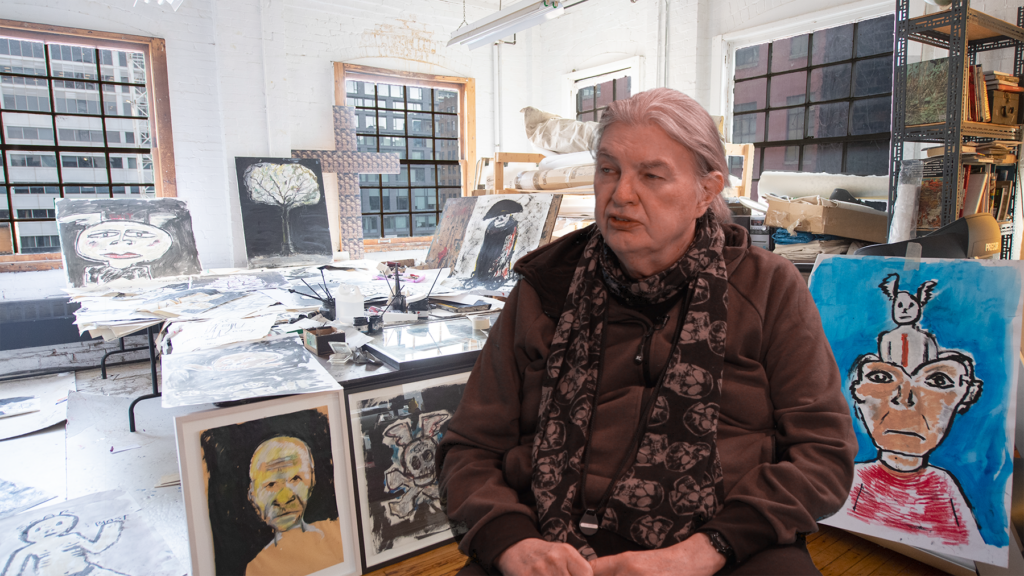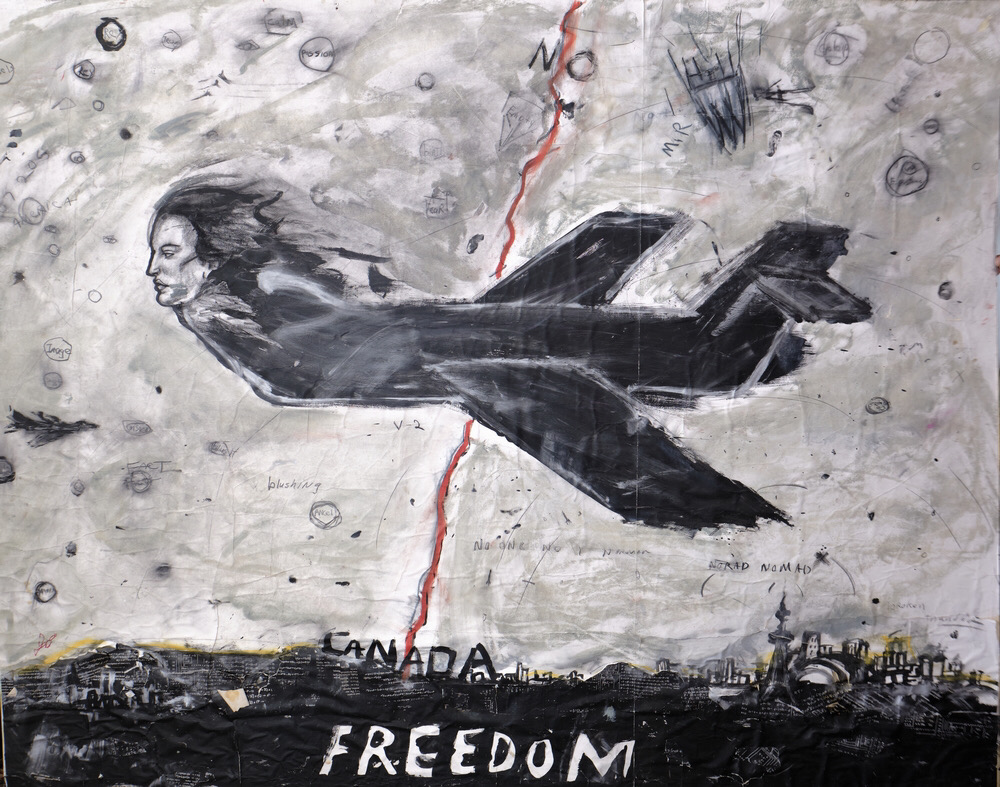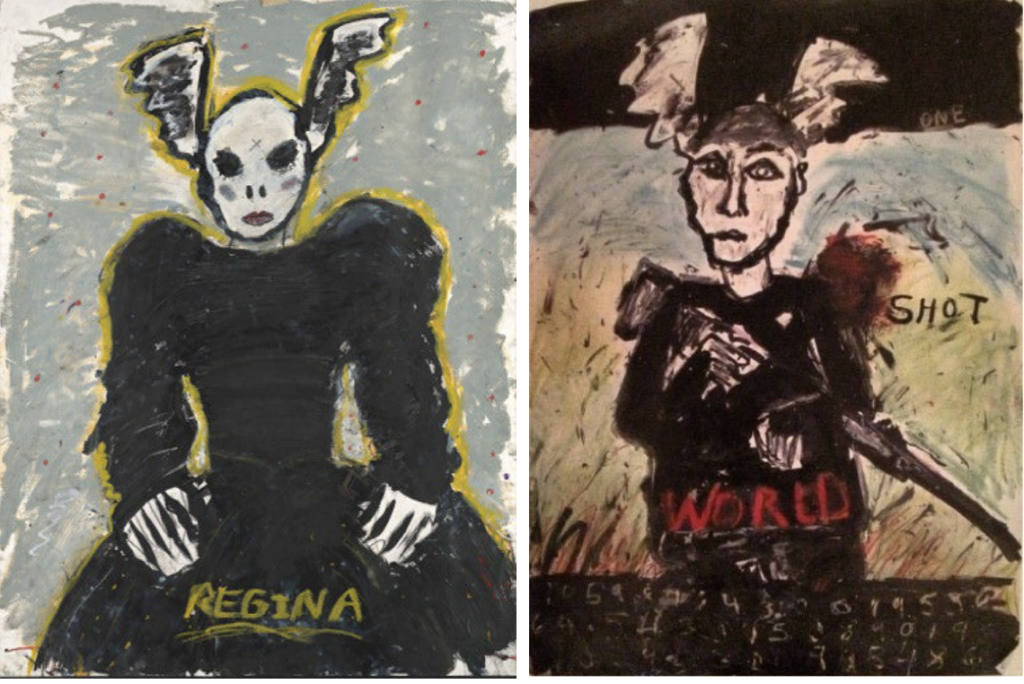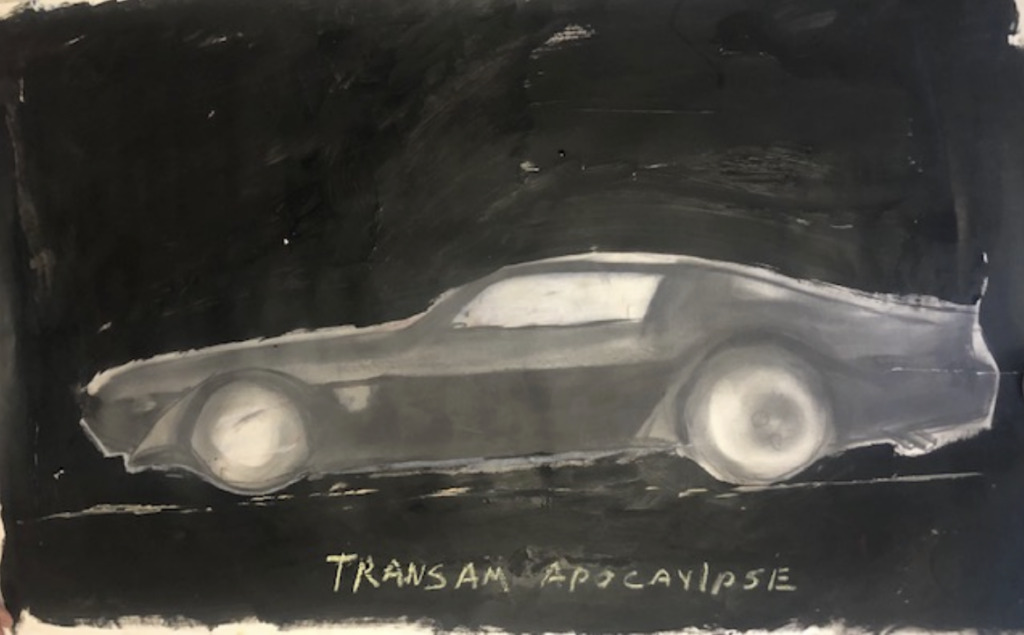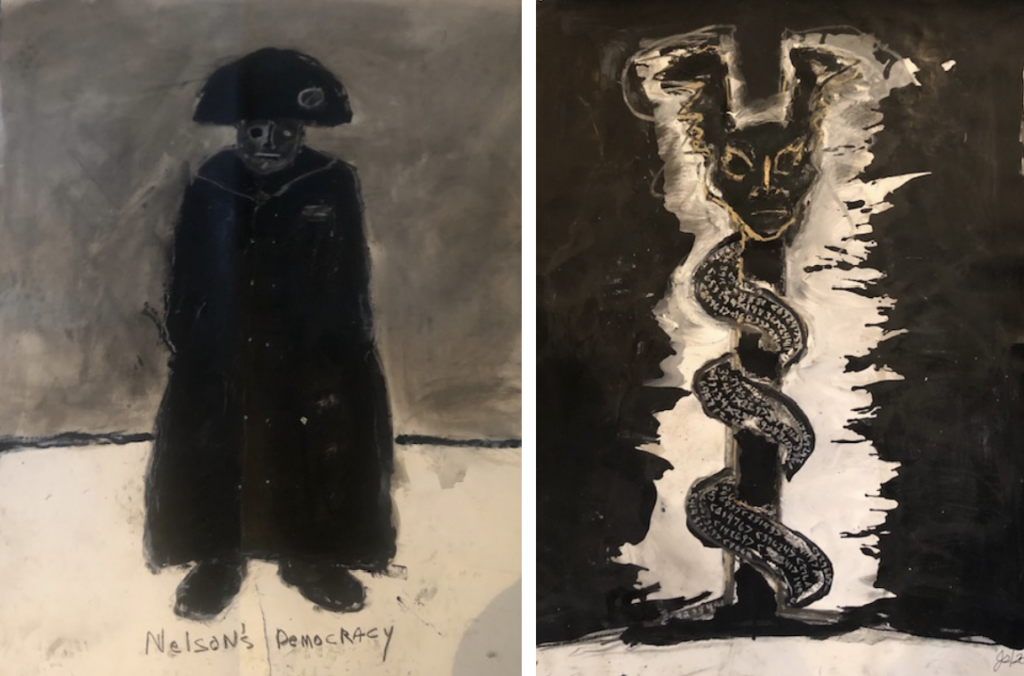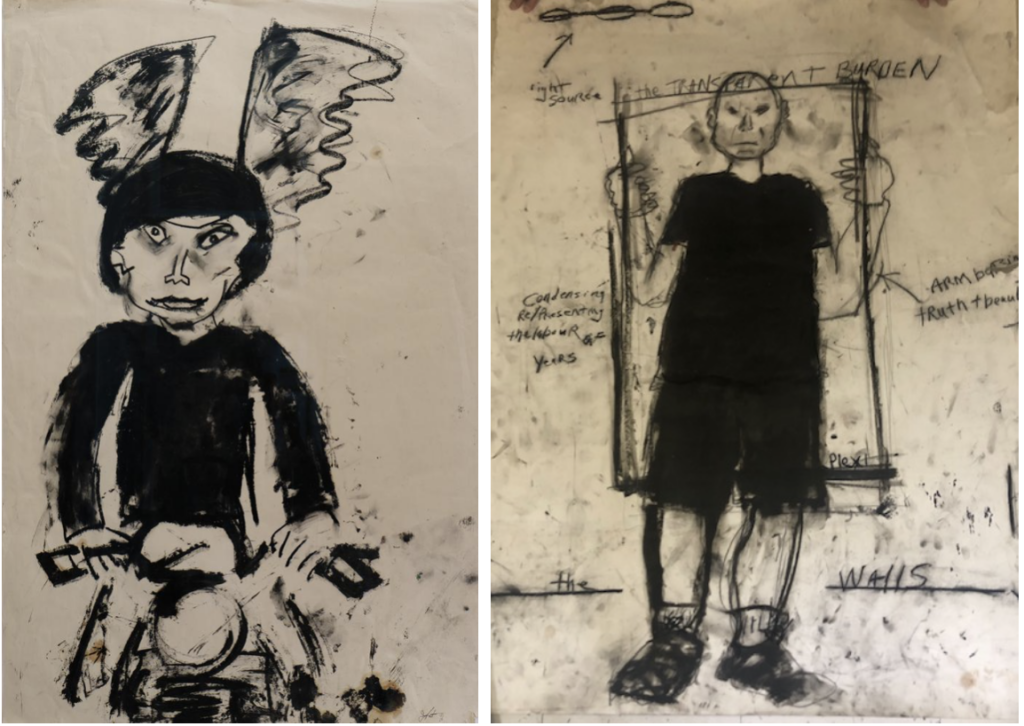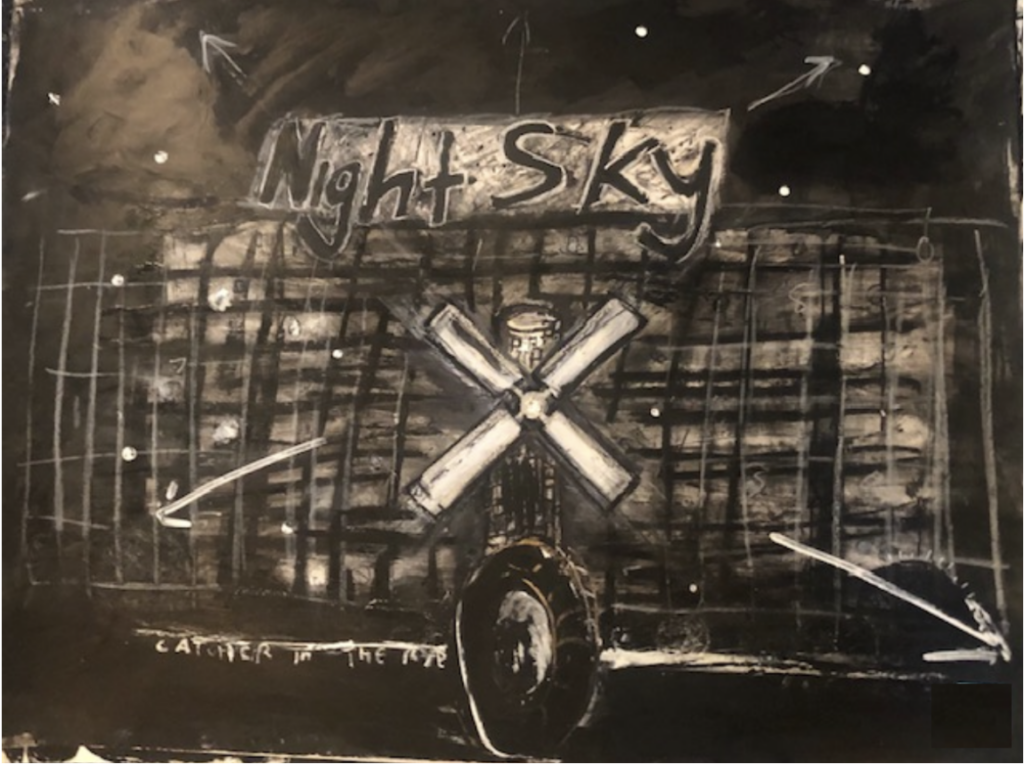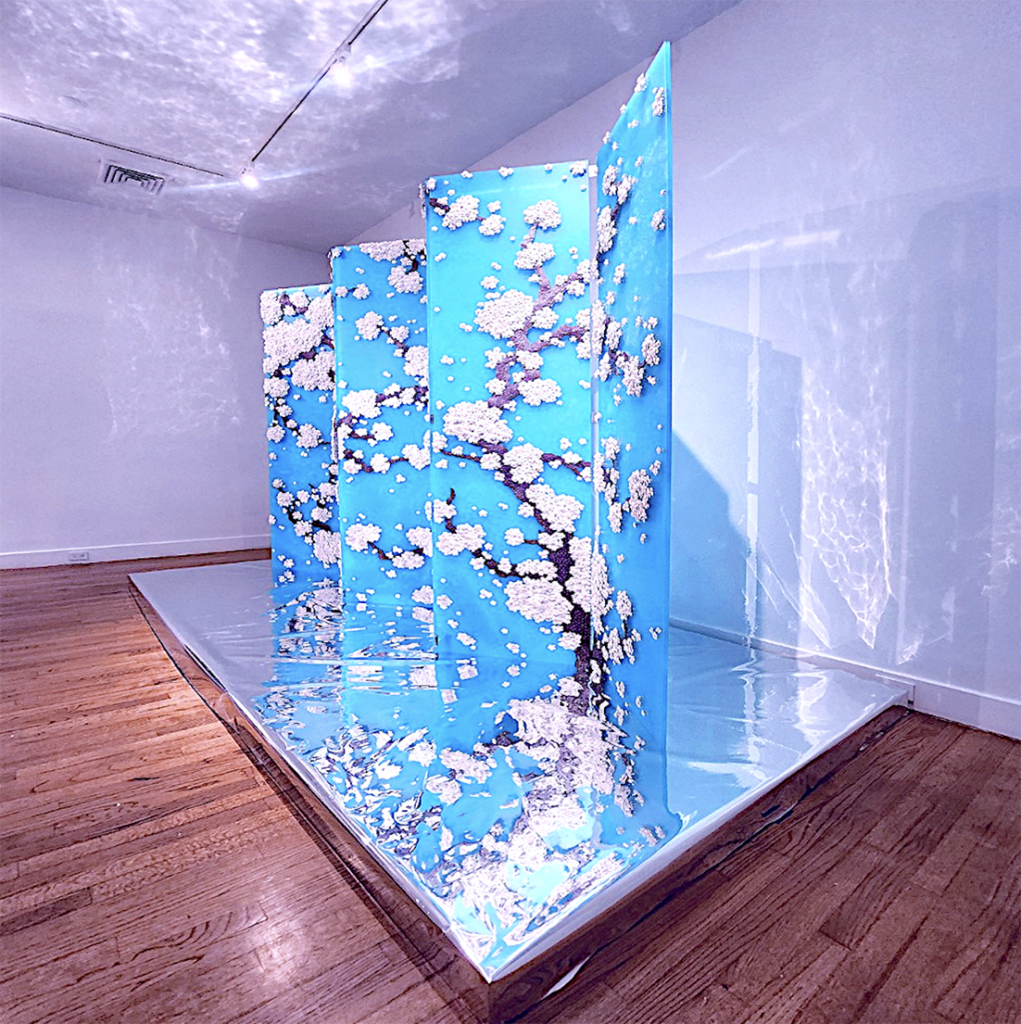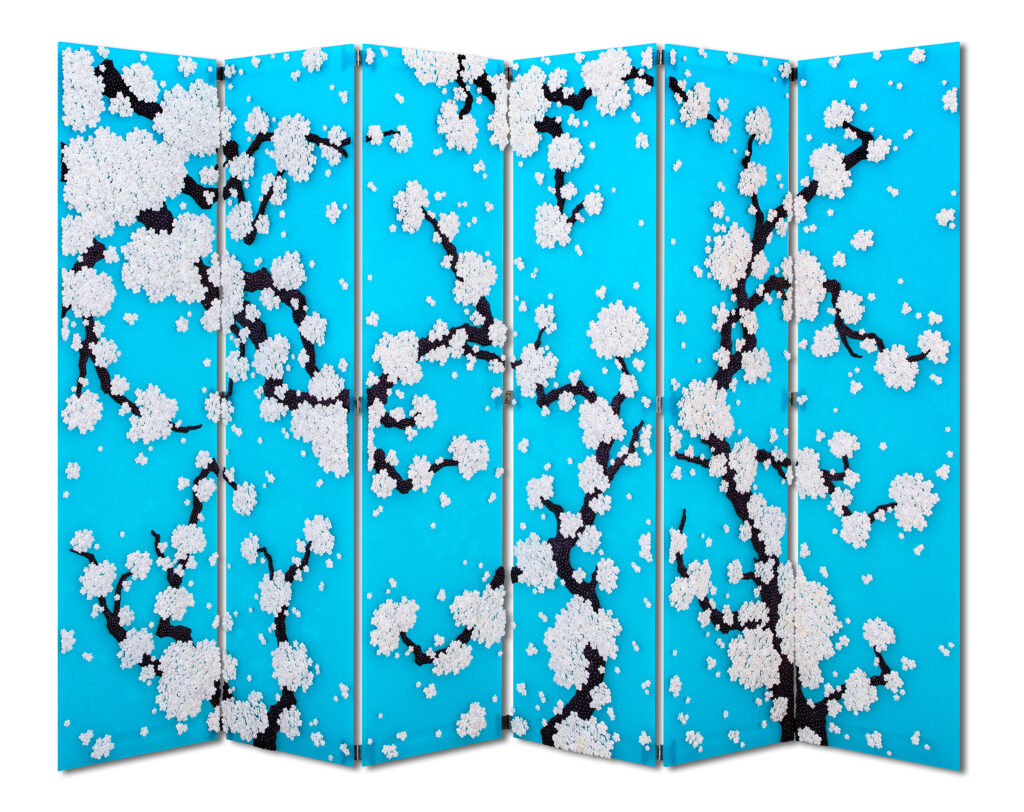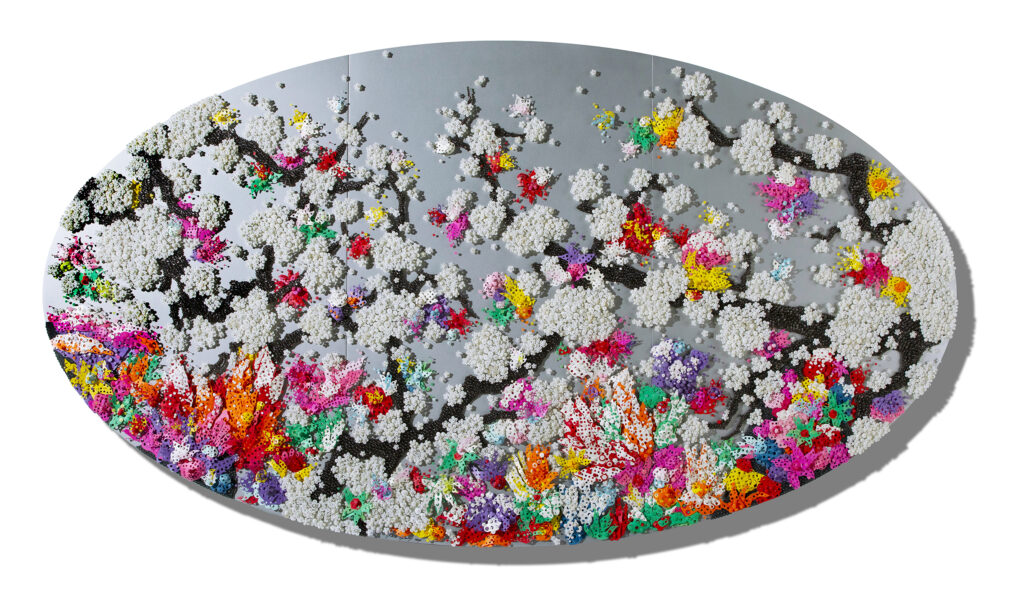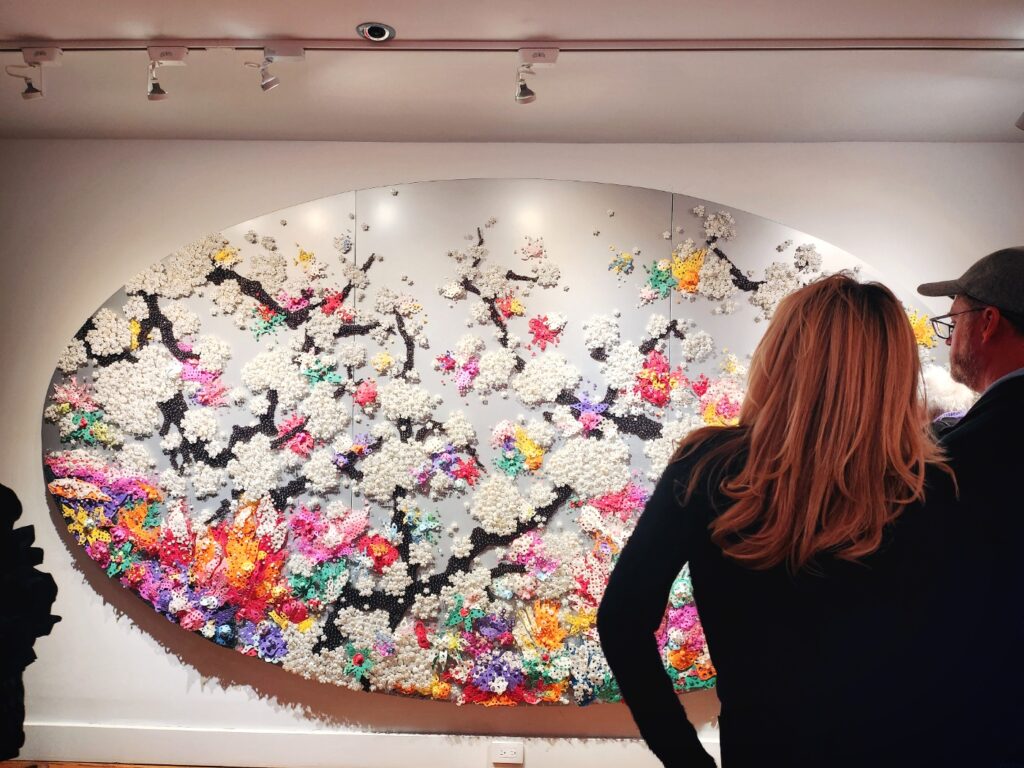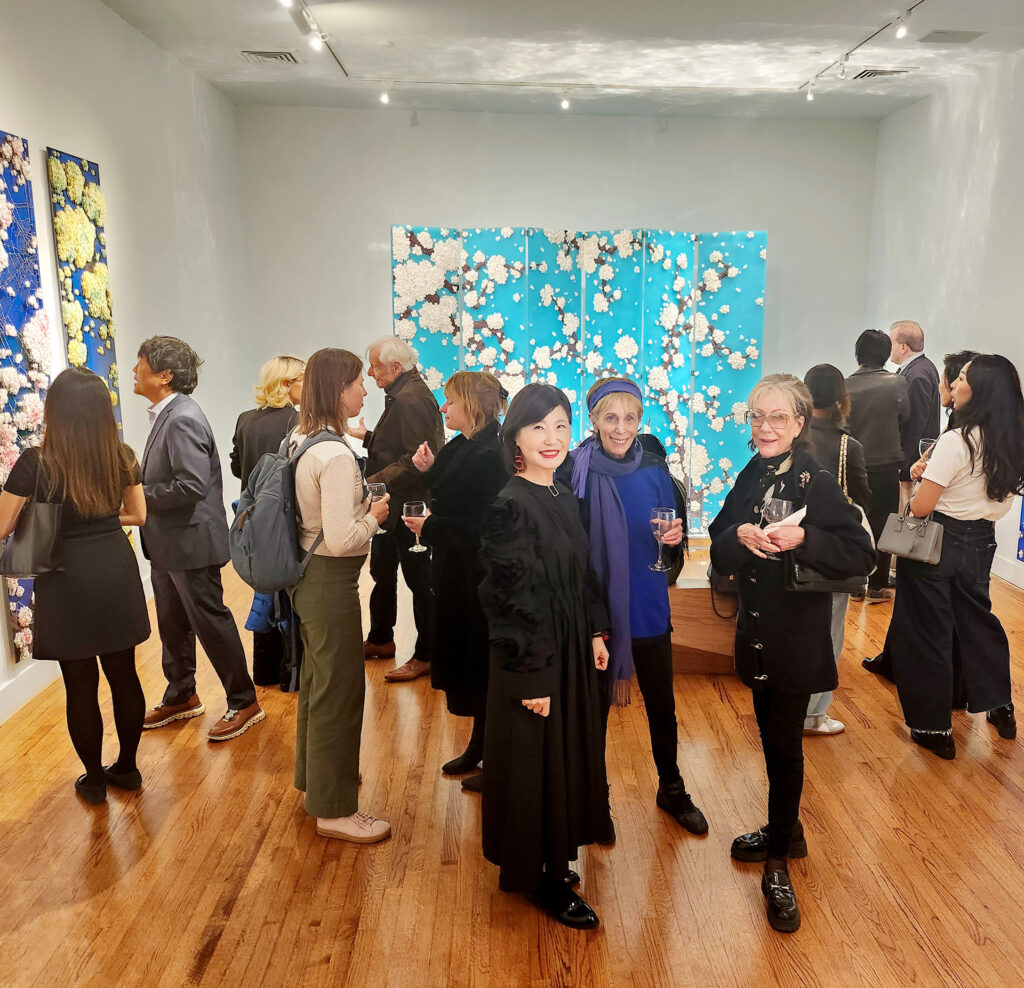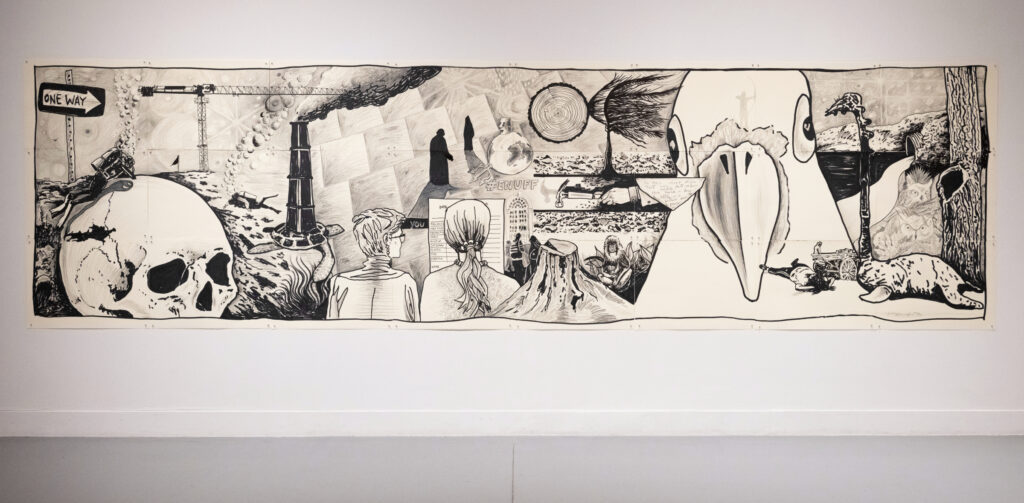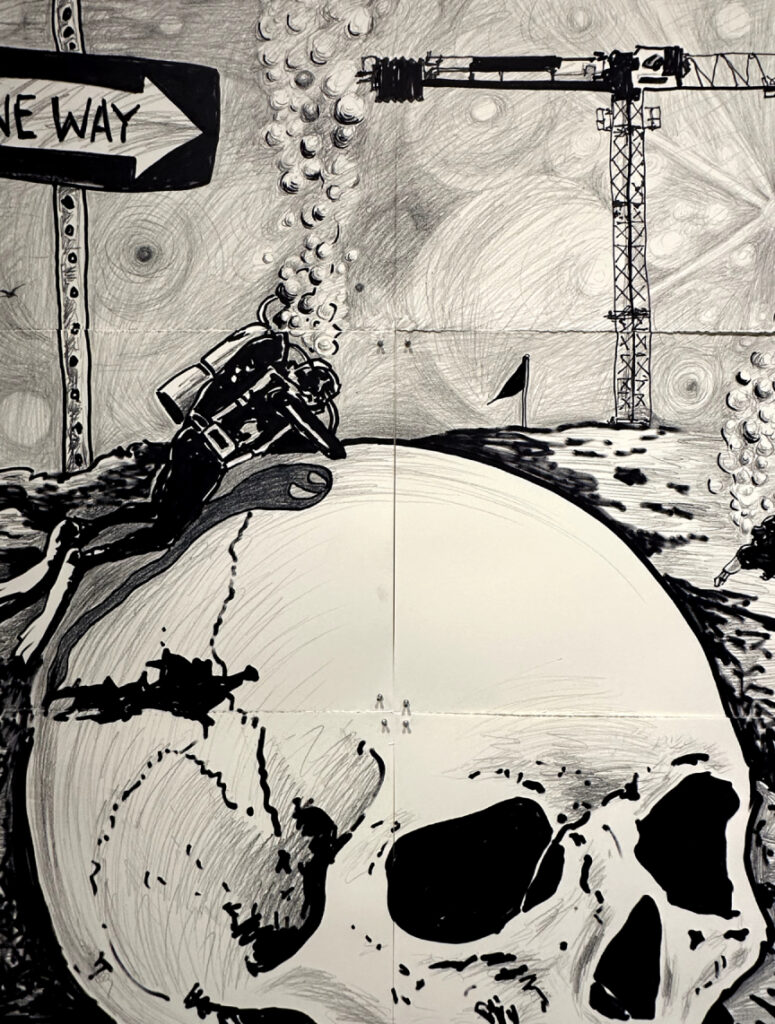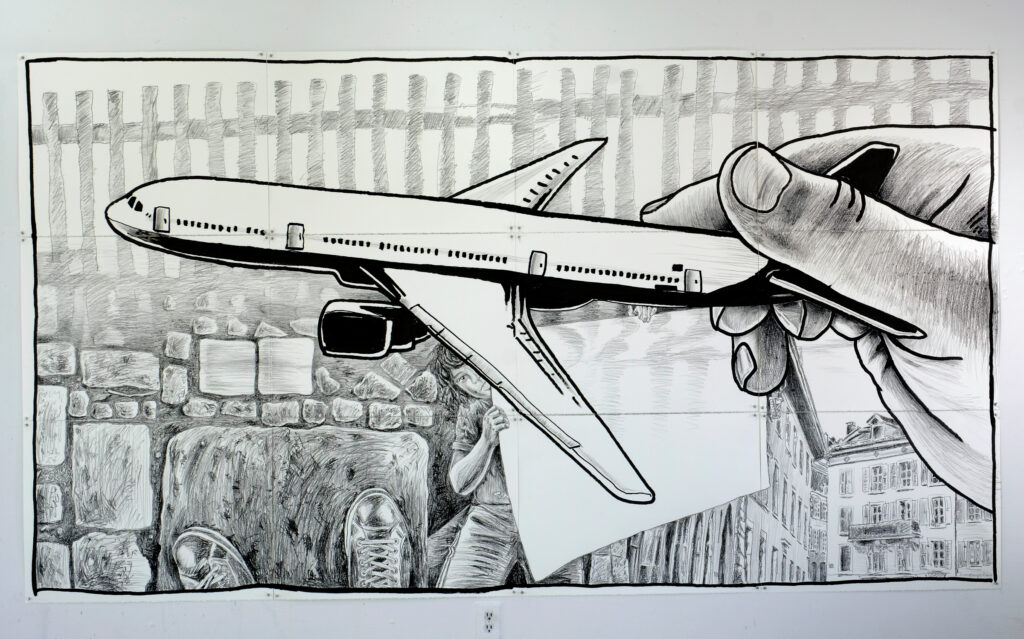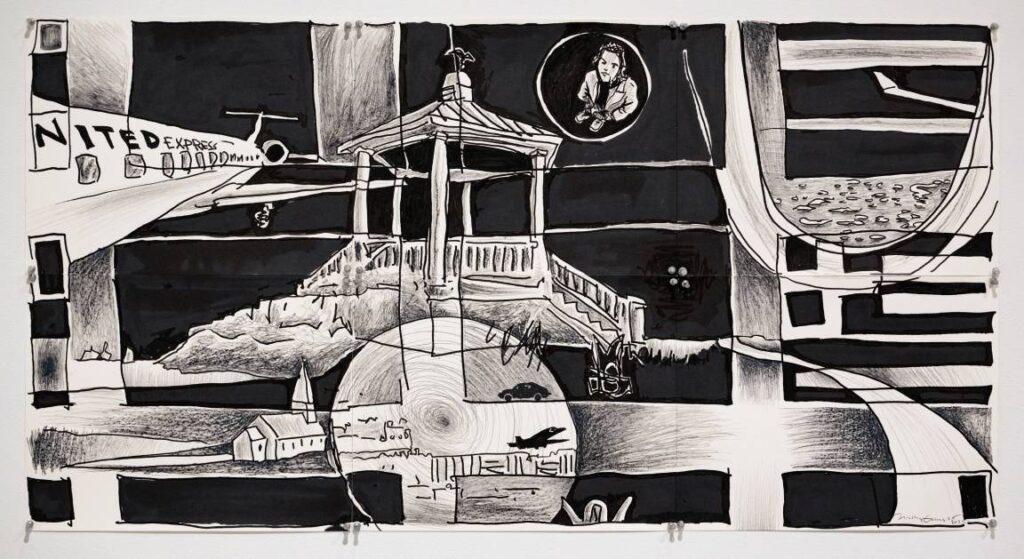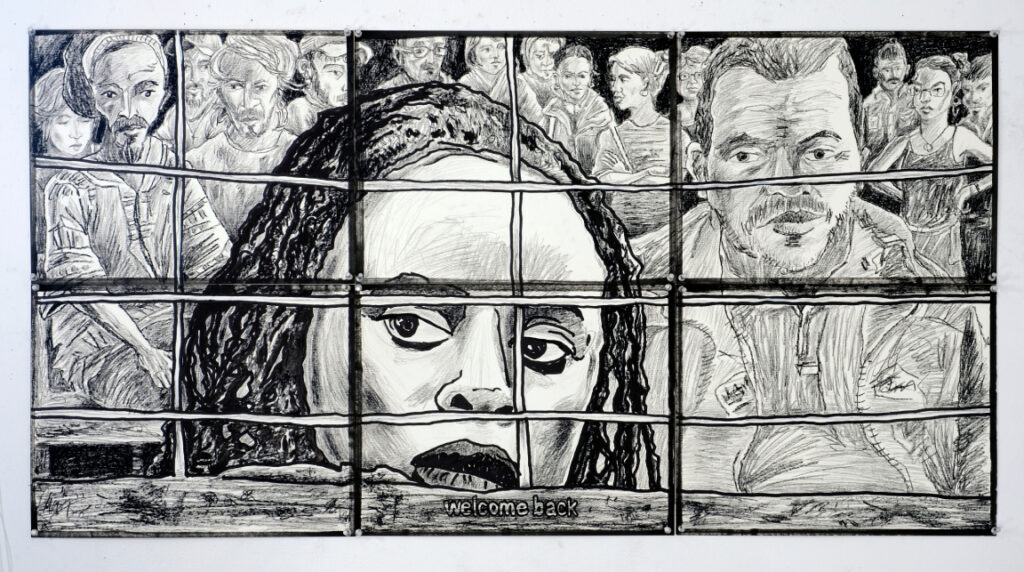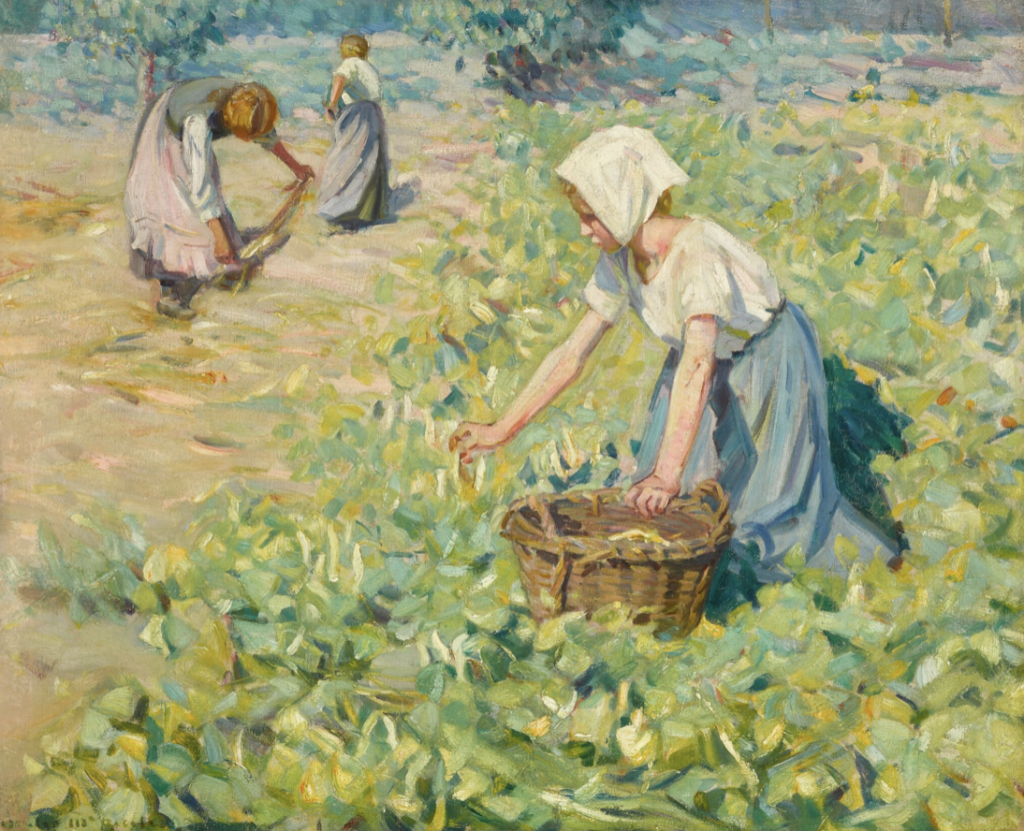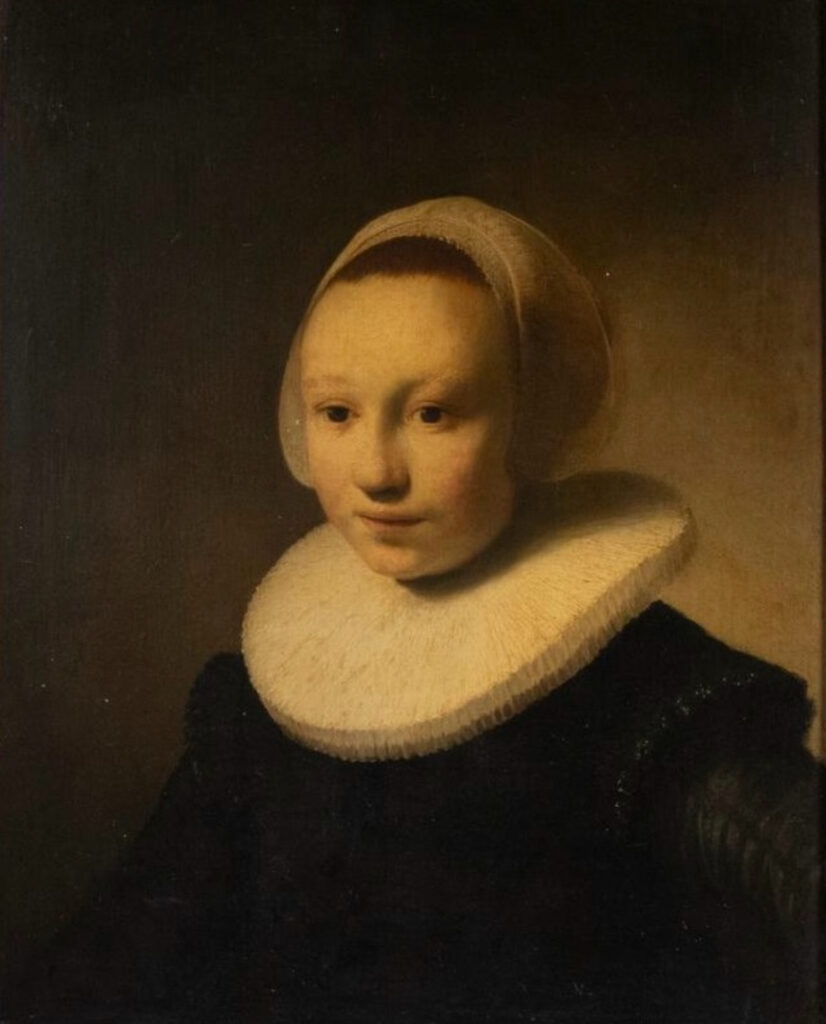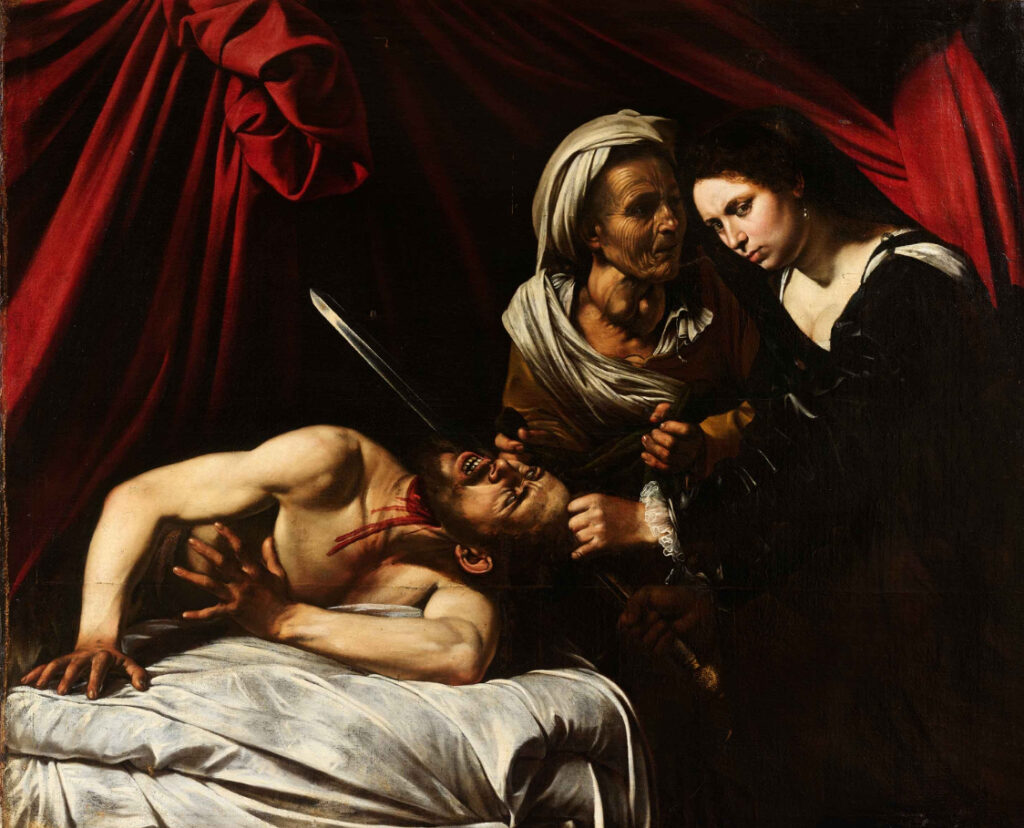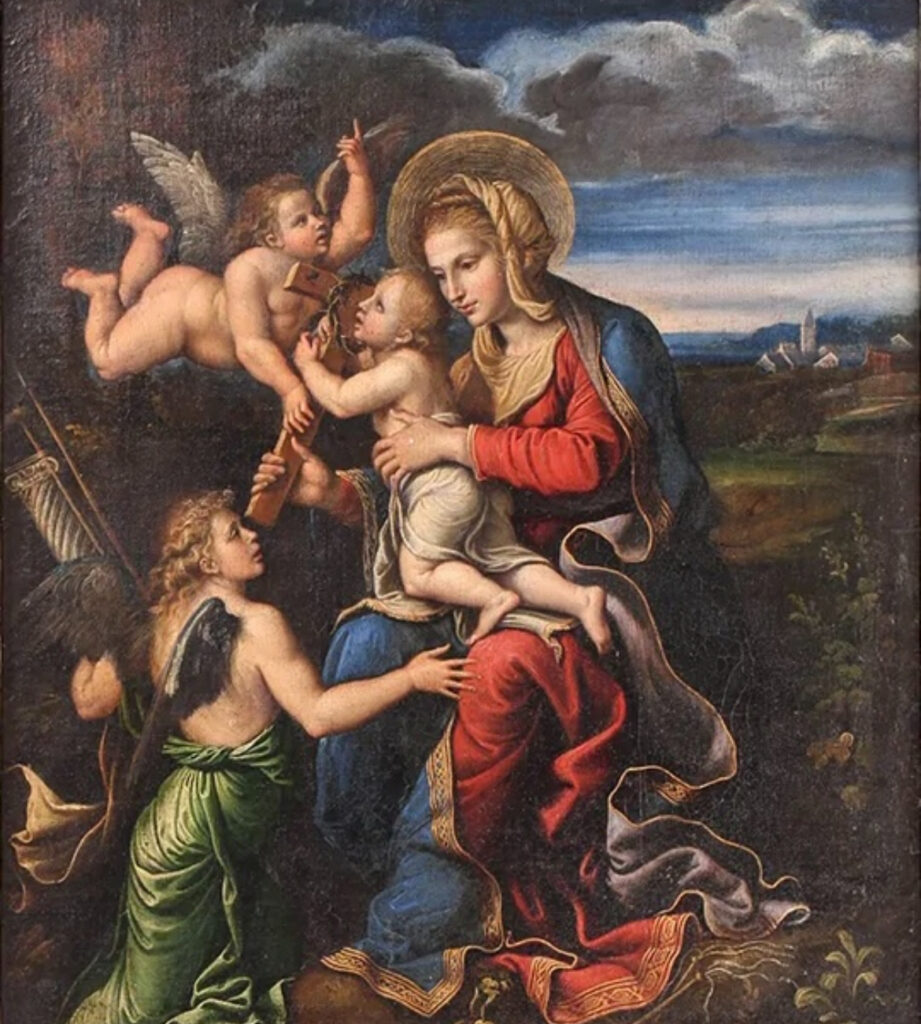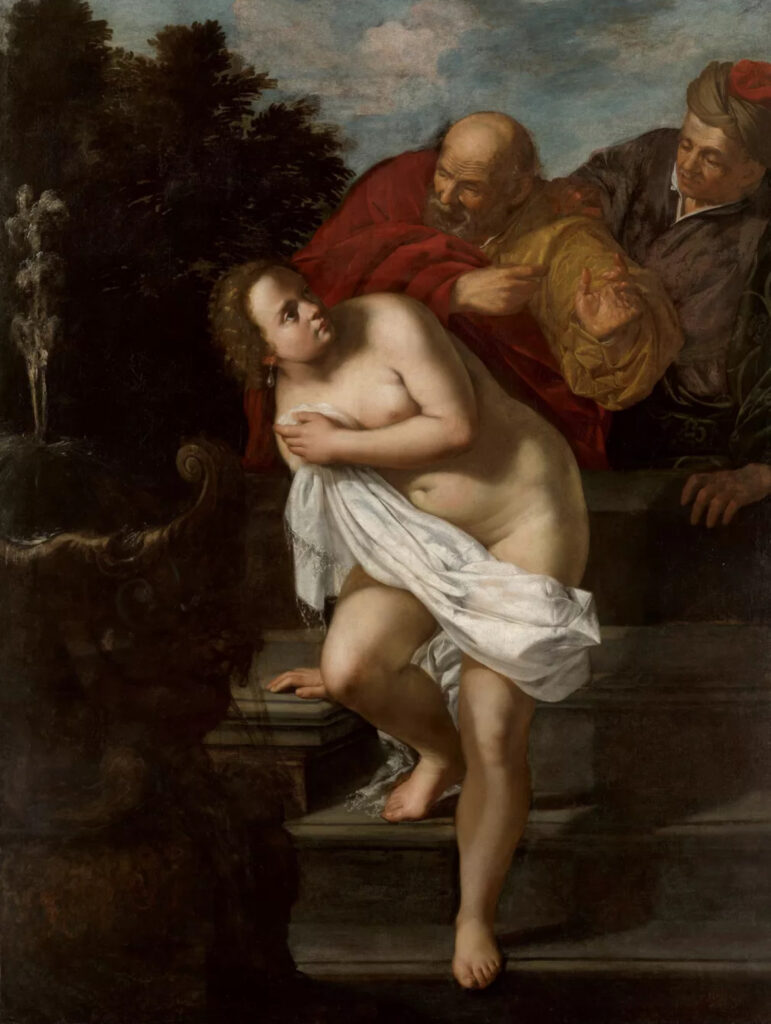by John Mendelsohn
Jen Mazza: Vicissitudes of Nature
January 10-February 22, 2025
Ulterior Gallery, New York
www.ulteriorgallery.com
Christopher Hart Chambers: Passages
January 23-March 11, 2025
Crossing Art, New York
www.crossingart.com
Louisa Waber: The World Inside This One
January 21- March 7, 2025
TenBerke Architects
events@tenberke.com
In her exhibition, Jen Mazza has assembled a kind of rebus made of quotations, both visual and literary. “Rebus” implies that from the images and words – variously painted, written, and sculpted – something will be spelled out. Maybe the desire to make sense is the red herring in this mystery, but nonetheless clues abound.
The original sources for the works are all from the past, starting in the Renaissance, on up to the early 20th century. This range of time periods lends an archival, antiquarian air to the exhibition. But rather than creating a cabinet of curiosities, Mazza’s poetic conceptualism works like poetry itself, placing one image adjacent to the next, and allowing their energetic conjunction to conjure something new in our consciousness.

Photo by Jason Mandella, Courtesy of Ulterior Gallery and Jen Mazza (c)Jen Mazza
In a 2021 interview, Mazza said that, “After all, anytime that we engage an historical work, we are engaging with the past as if it pertains to us.” So, we as viewers must be alert to how these couriers from an earlier time might actually be speaking to us about our relationship to the natural world, history, and most importantly to change as an existential constant.
The exhibition’s title, Vicissitudes of Nature, points to life’s unpredictable contingencies. This sense is embodied in the artist’s rendering of Ruskin’s diary script, his words describing the weather, including “Terrific Thunder”, “brighter”, “beauty”, and “Worse and worse”.
Water and its evocative possibilities are a recurring presence throughout the exhibition – in an expanse of sea, in diagrams of nautical navigation, in the name of a ship, and in passages from Virginia Woolf’s novel The Waves.
This feeling of watery, shifting fortunes is embodied in the exhibition’s largest work, Portent 1, a painted excerpt of Titian’s The Submersion of Pharaoh’s Army in the Red Sea, a 12-block woodcut. In Mazza’s version the Israelites and the Egyptians have both been effaced, with only the rippling waves remaining visible.
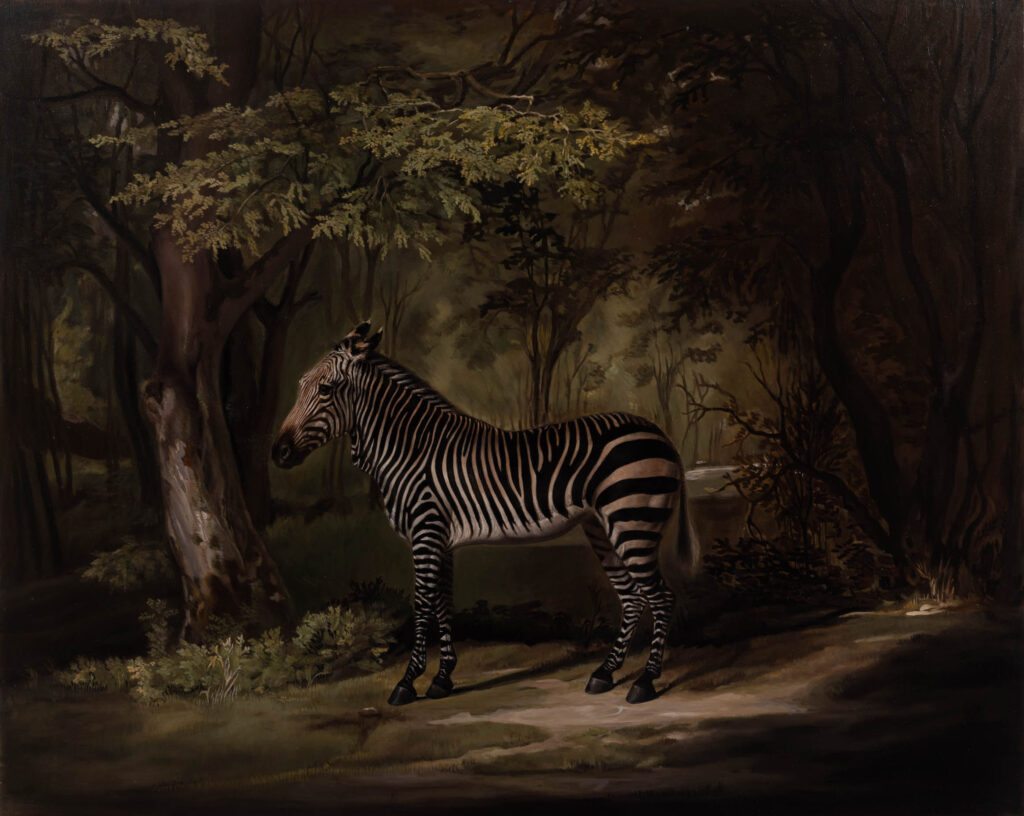
Photo by Jason Mandella, Courtesy of Ulterior Gallery and Jen Mazza (c)Jen Mazza
The sailing ship HMS Terpsichore delivered from Southern Africa the first zebra publicly displayed in Great Britain, the sole survivor of a pair that had been transported. In Terpsichore (1760) Mazza faithfully reproduces George Stubbs’s painting of the animal, while in Terpsichore (1847), the painting’s subject is a white silhouette – both are reminders of the empire’s colonial exploitation.
Christopher Hart Chambers paints paradise in the form of flowers, leaves, and branches, densely layered in atmospheric space. He evokes a world in bold motifs, distillations of growing things blooming and intertwining.
This world of organic energy is both observed from real life, and echoes how in many cultures nature becomes art, bringing the life of plants into human discourse as a charged spiritual, aesthetic, or decorative presence. In Chambers’s work we sense as a model flowers and branches depicted in the art of China and Japan. Equally apparent is the lineage of modern painting, ranging from Matisse to Alex Katz, that seeks to create simplified abstractions of nature’s complexity. In Chambers’s hands, the patterns of nature take on logo-like silhouettes, perhaps a distant recollection of this painter’s early days in the Street Art movement in New York.
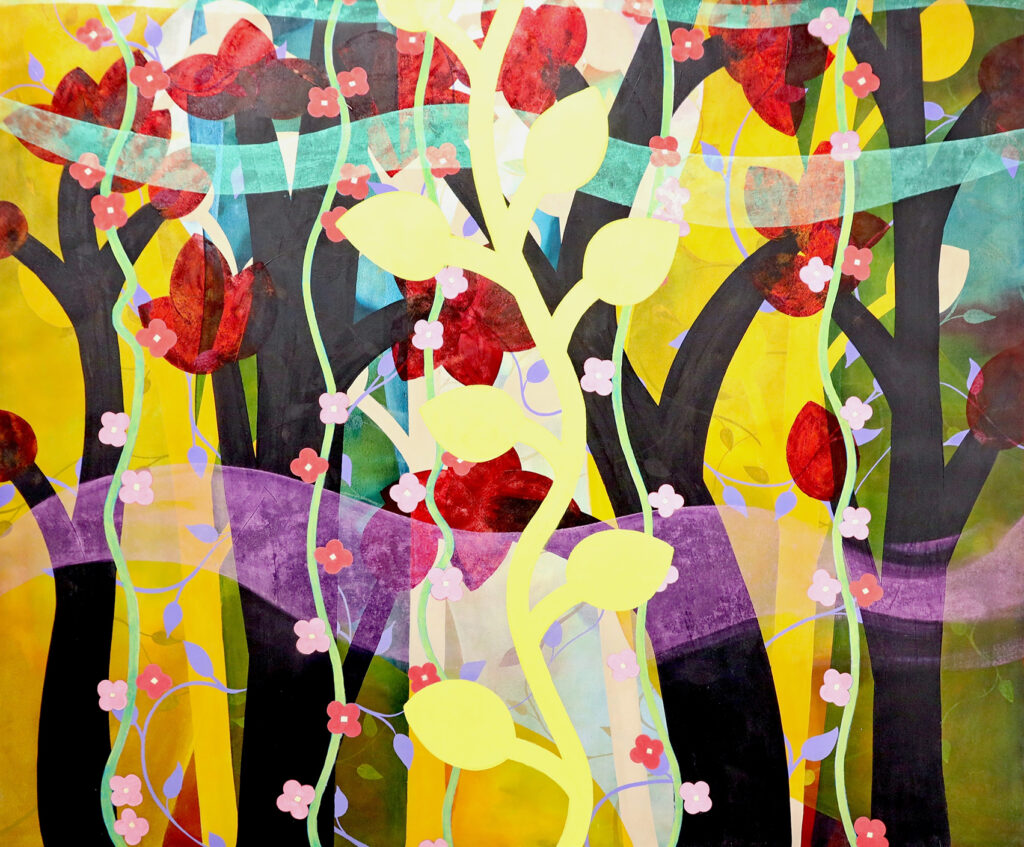
One striking work is Fertile Circus, a fugue of overlapping rhythms, formed by glowing depths of yellow light, that alternate with vertical passages of olive green and aqua. Overlaying this background are black tree trunks sprouting semi-transparent scarlet flowers. Wafting in front of the trees are wavering bands of turquoise and lavender. Closest to us are vertical sine curves in a soft green, and a large central stem with leaves that seems to create a negative space for us to enter.
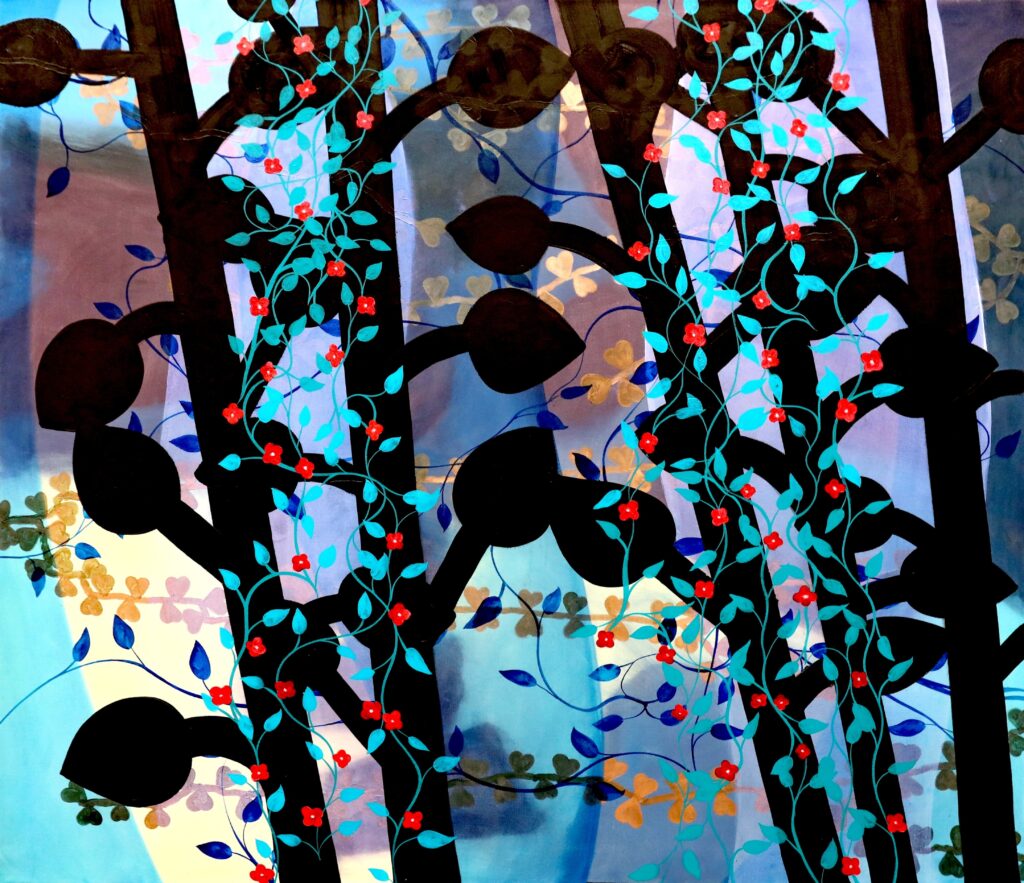
In the painting Chocolate Forest, black, spear-like leaves ominously dominate the soft-focus space beyond, over which play a sign of hope – twisting stems and small, red flowers.
The artist’s touch is ever-present in these works, in the delicate mists of colored space, and in the impasto, scumbling, and glazes of oil paint. These painterly techniques work in contrast to the flat, solidly colored trees and tendrils.
Color is the prime vehicle for feeling in these works. It exists on a spectrum from jewel-like tones, to color tamed with the admixture of white, to black that serves as a stark counterpoint.
Taken together, the elements of Chambers’s paintings coalesce into an enchanted vision, a psychedelic realm that encompasses dualities – the nuanced and the graphic, the buoyant and the haunted.
The World Inside This One, written across one of Louisa Waber’s pieces from 2023, serves as the title of this exhibition. These words might be guide to entering into the many small works on paper and the paintings shown here. Through drawing, watercolor, and acrylic, Waber evokes a psychic realm to which the visual is an opened portal.
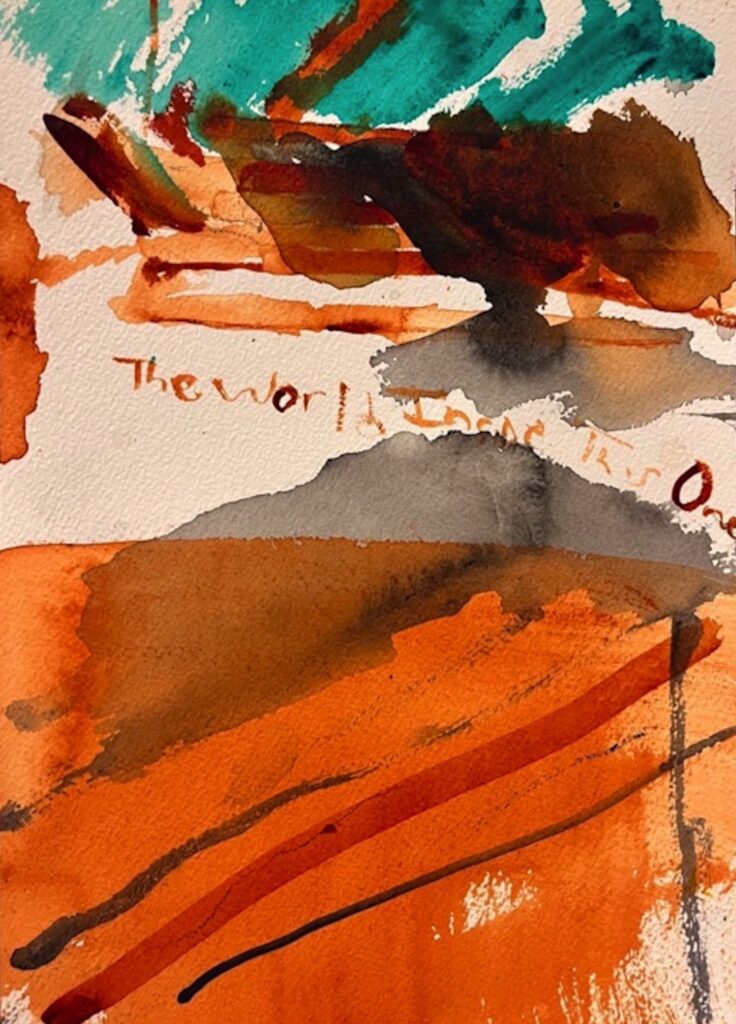
This portal takes many forms, but certain commonalities emerge. A small sheet of paper’s surface flooded with a wash of color, as a spidery structure floats across it. A bold form emerging from a dark atmosphere, along with a tracery of lines. A quilt-like grid holding a grid of color and emptiness. Vivid brushstrokes supporting a bramble of angled lines.
These are just a few of the recurring motifs, but together they constitute an ongoing, seemingly diaristic series of documents that record states of feeling. Like visual seismographs, they are sensitive to the fluctuations of mediums under the artist’s touch. They variously convey a sense anguish, searching, release, and fierce energy, along with a desire to construct a matrix to hold all the emotions that have been awakened. It seems that above all there is an insistence on the artist’s voice to speak, whether emphatically or quietly, without censorship.
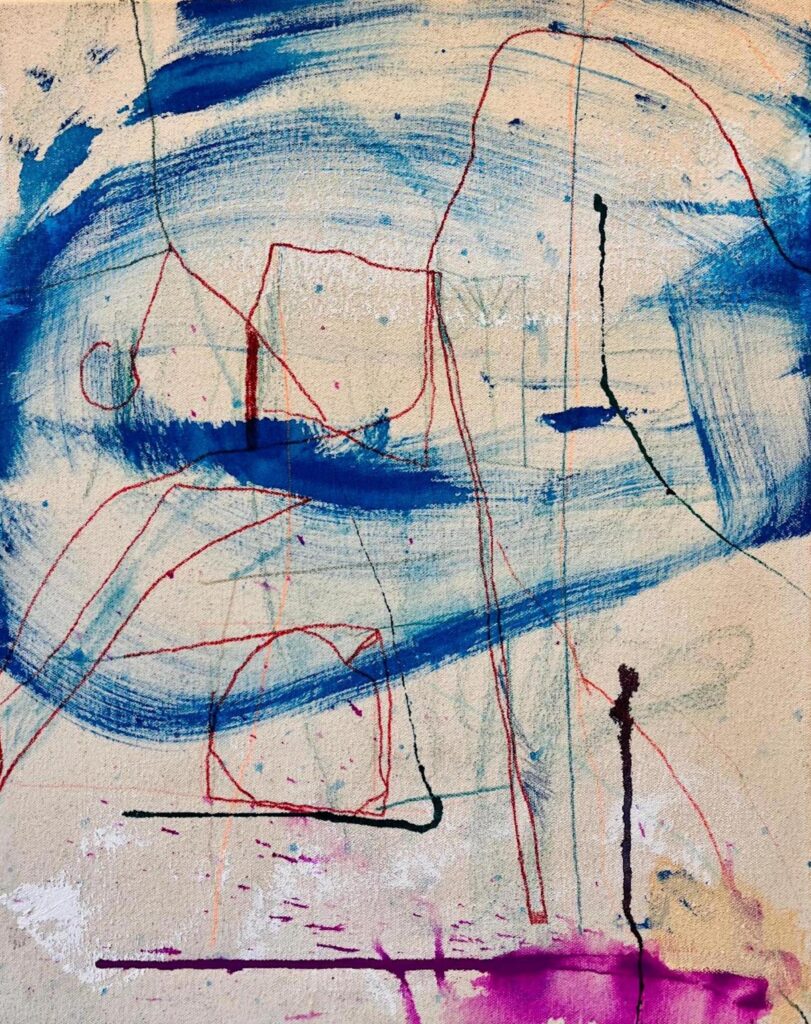
A prime example is the painting How Do You Know? from 2024, with its spare, cobalt blue brushstroke that curves back on itself, like the vestige of a whirlwind. On top of it are drawn blood-red lines, a jury-rigged, high-wire act above the maelstrom.
This work is part of a heritage that has many strands. There is the history of Expressionism, in its many forms, with its faith in painterly physicality. The example of Paul Klee is a recurring one, with his intimate evocations of the dream-world that is just beyond the everyday. And there are other precedents, like Louise Fishman, who especially in her early work combined outspoken feminism and abstraction.
In the end, what makes these paintings and drawings original is how this particular artist grants us access, through a kind of direct transmission, to the drenched landscape of her inner world.

